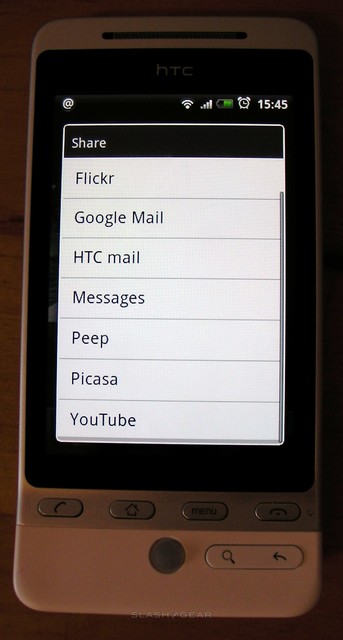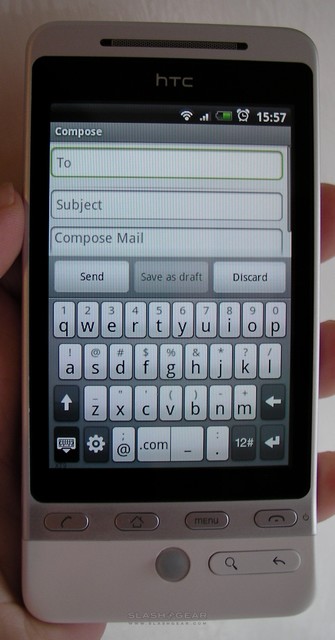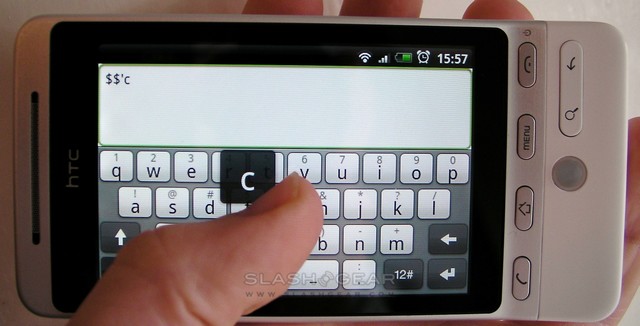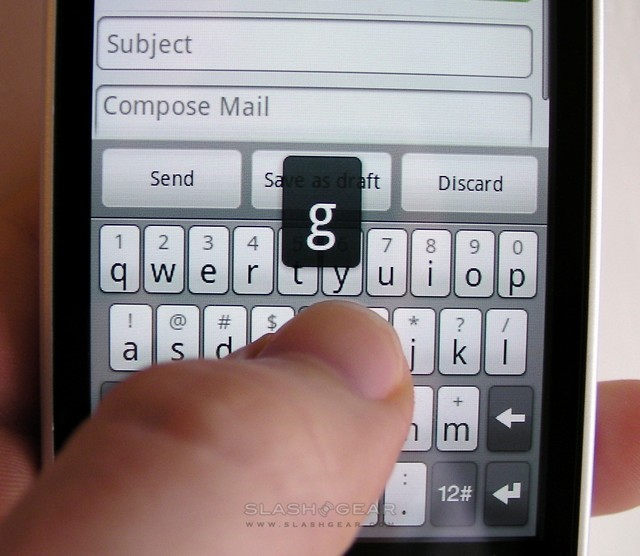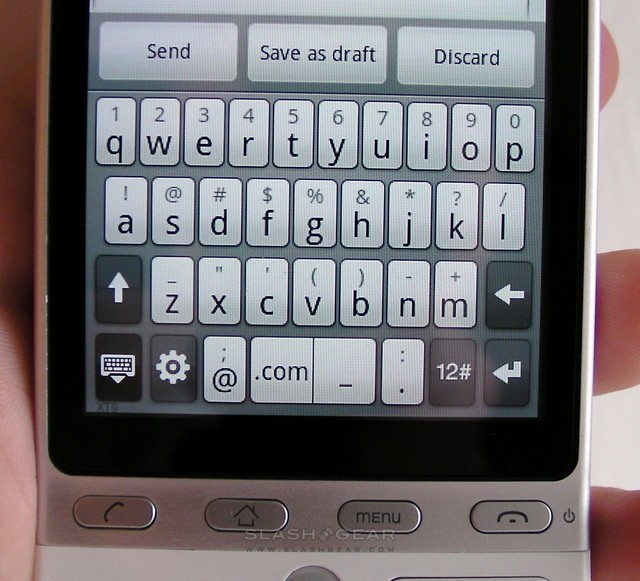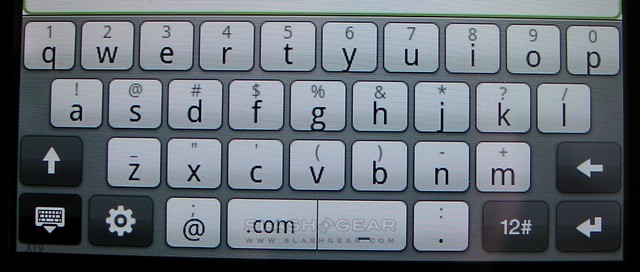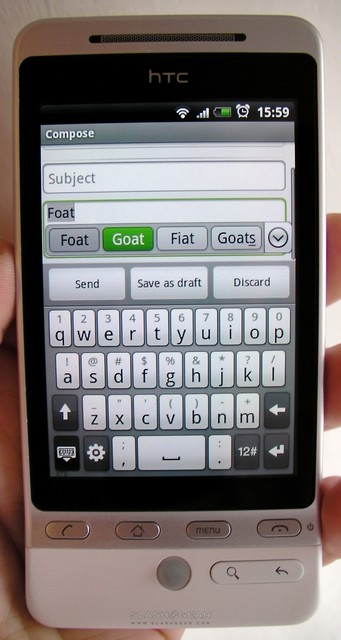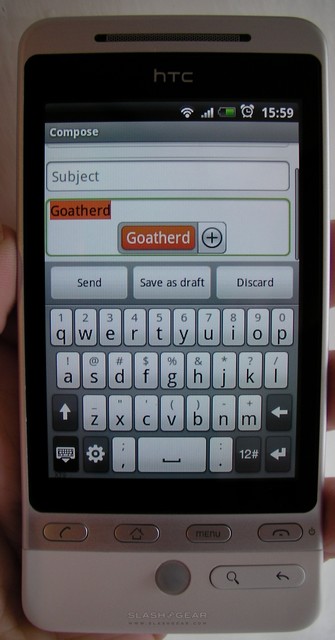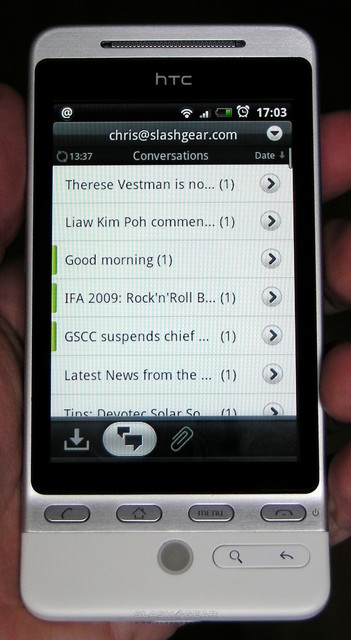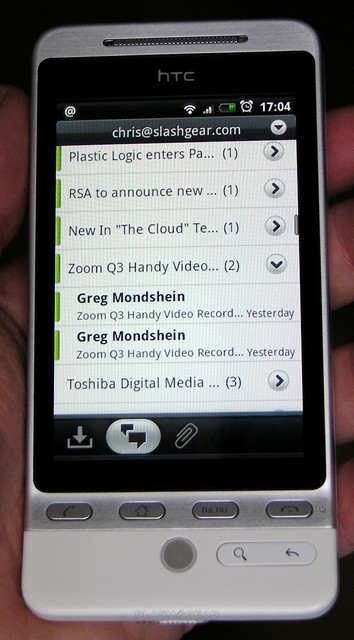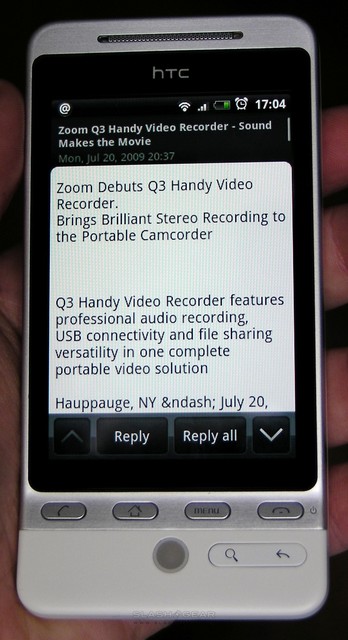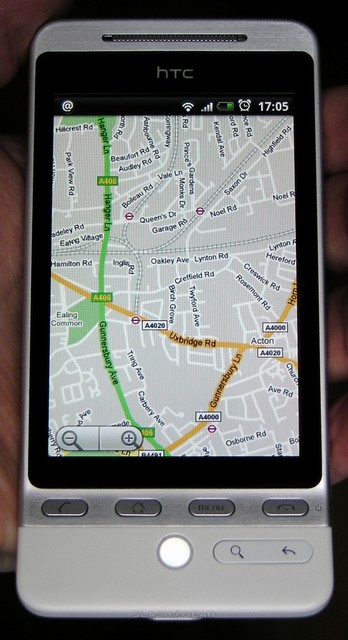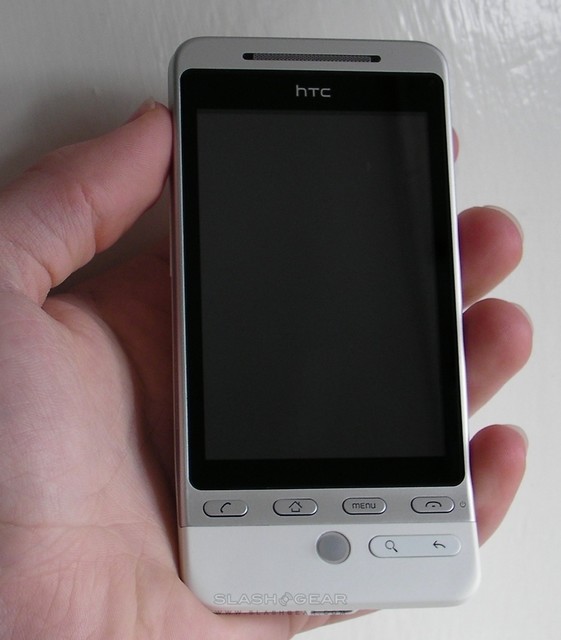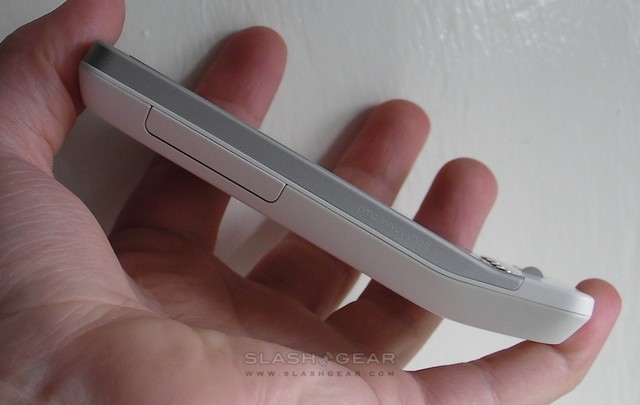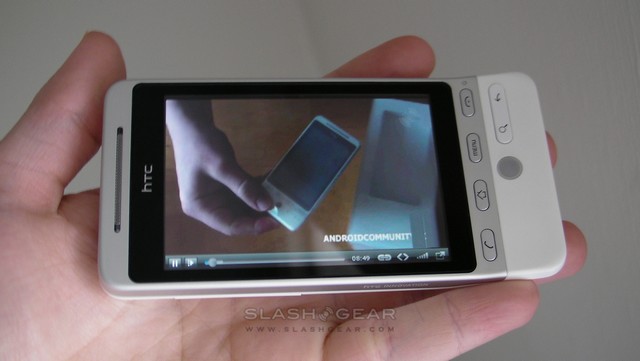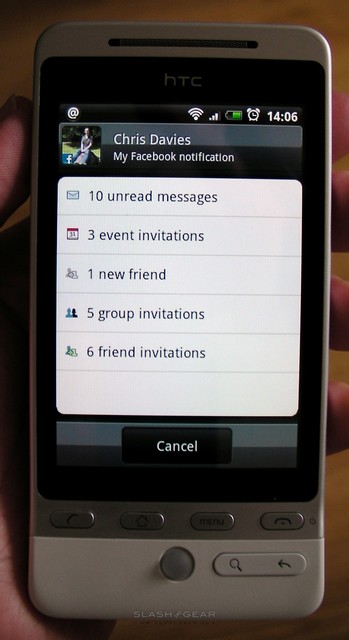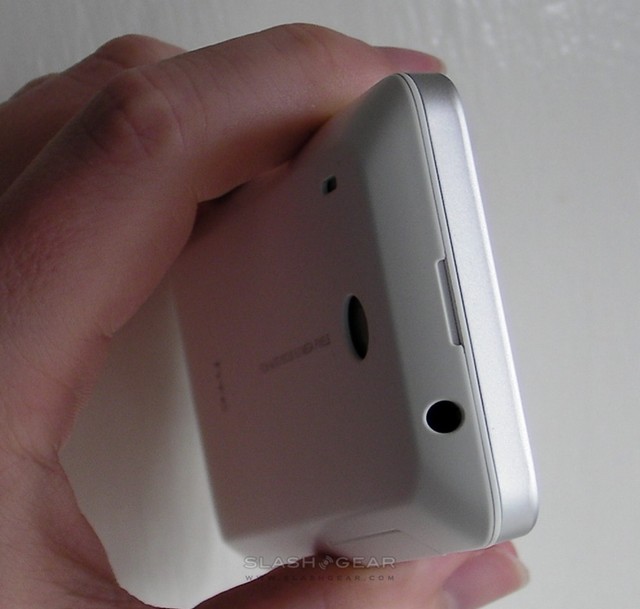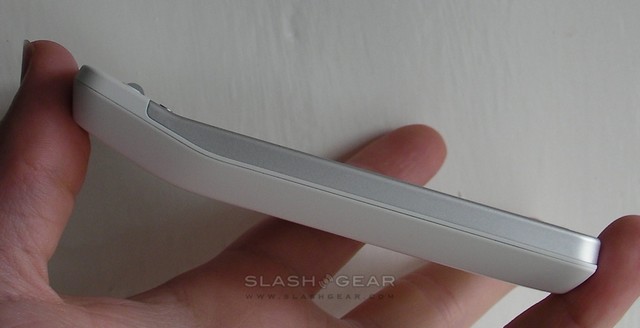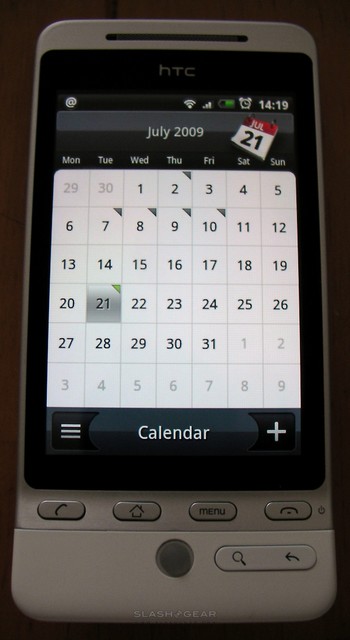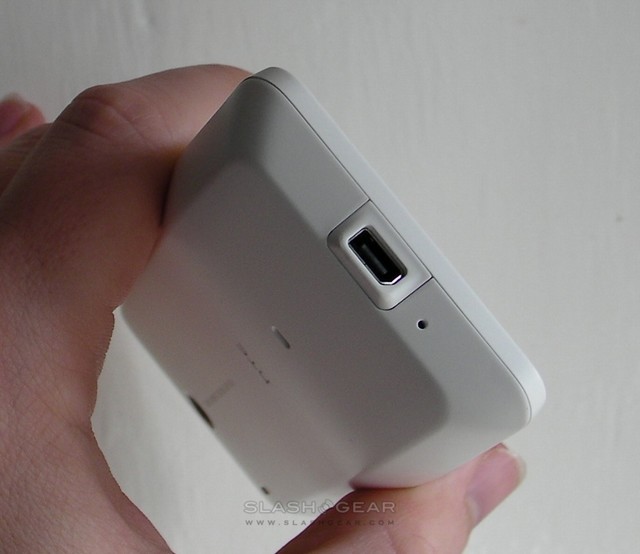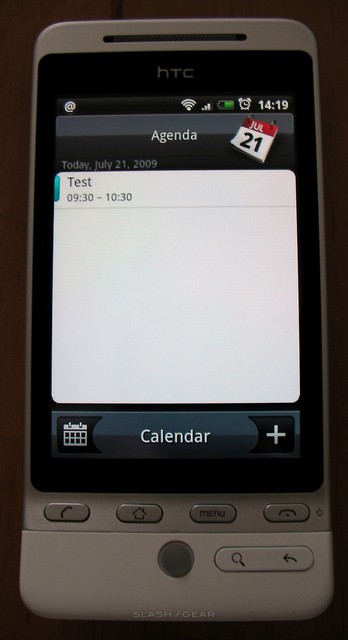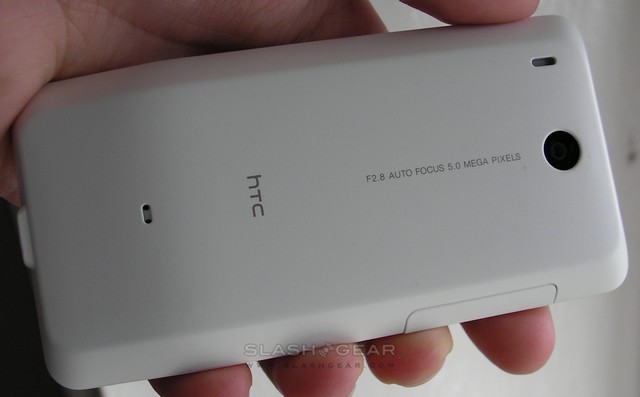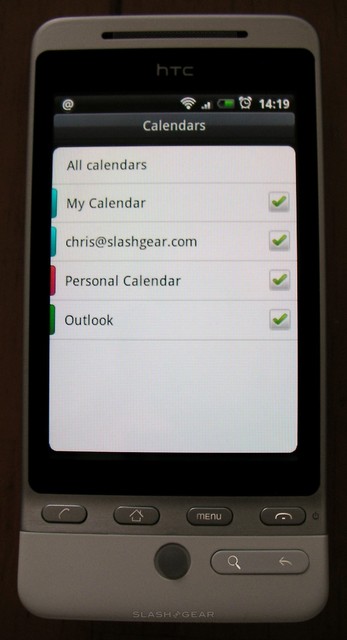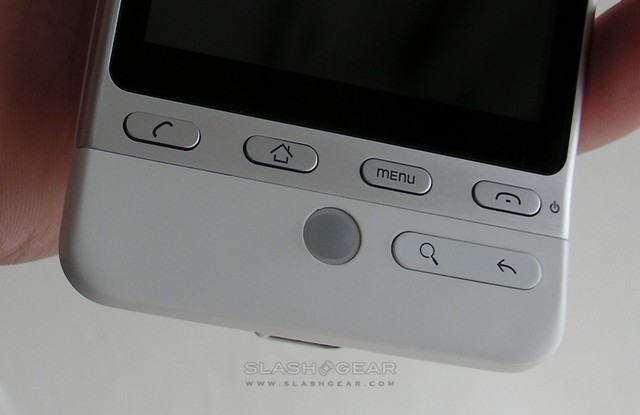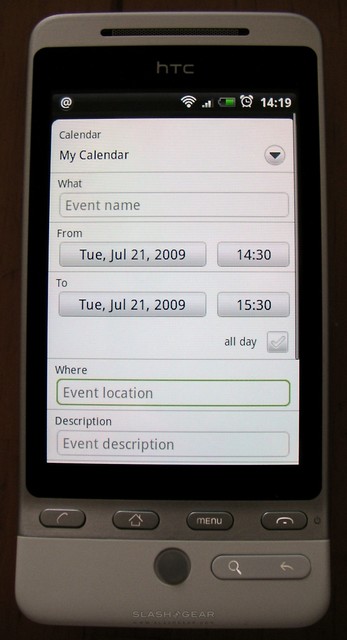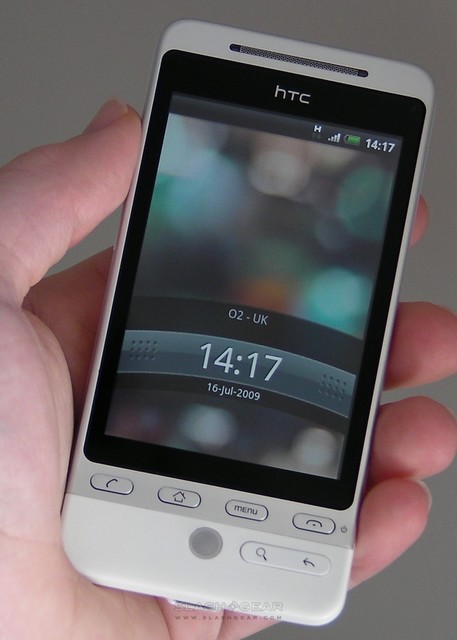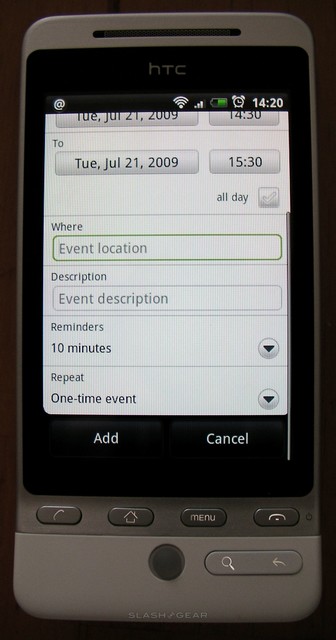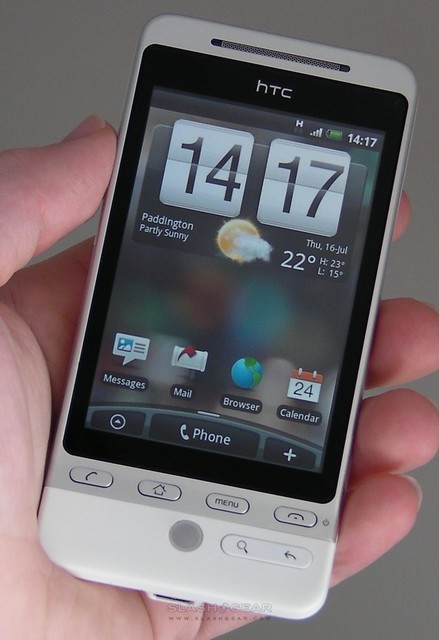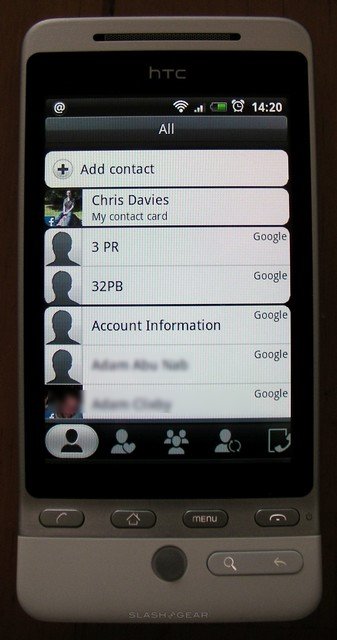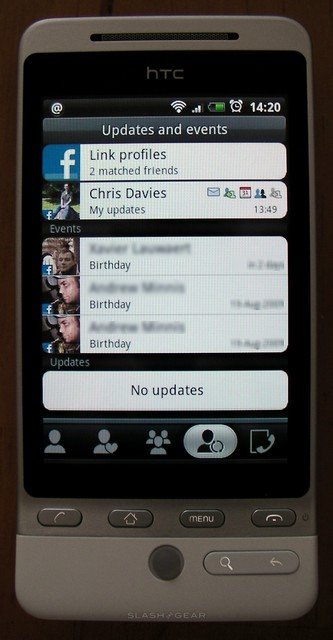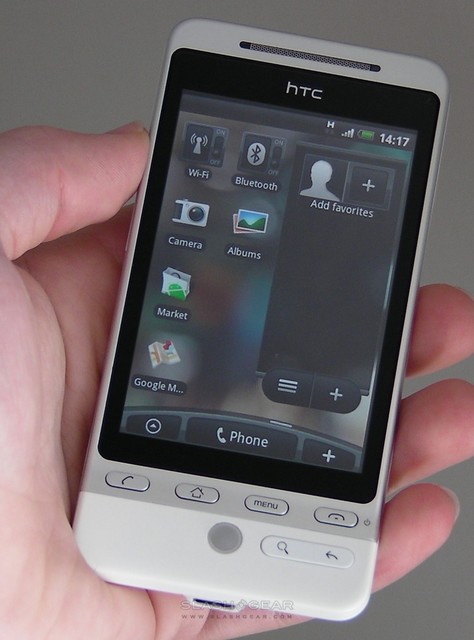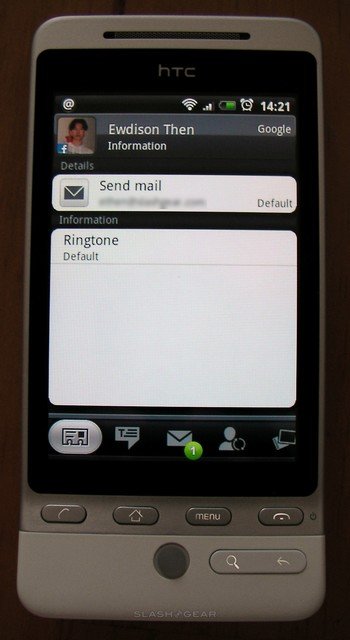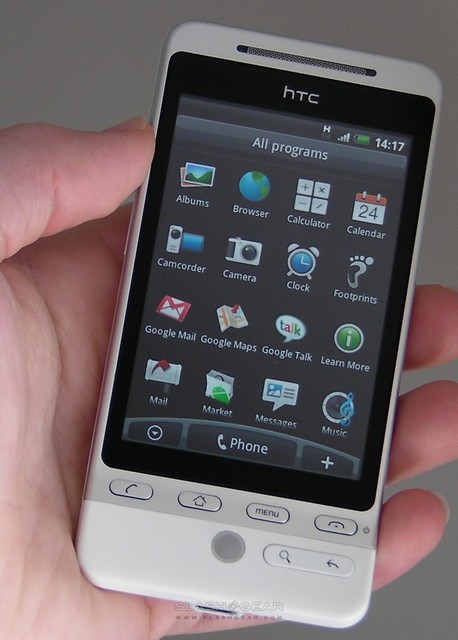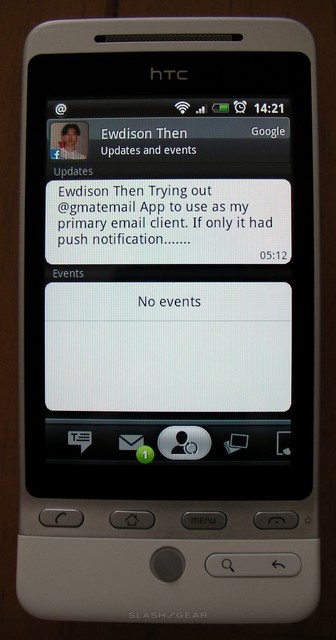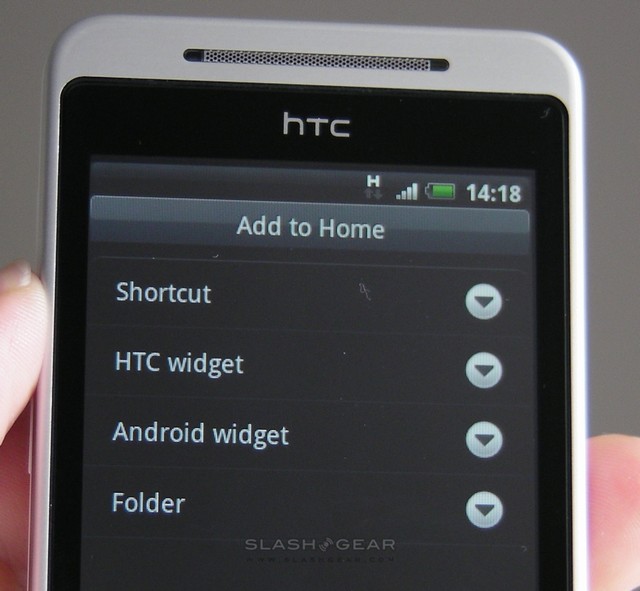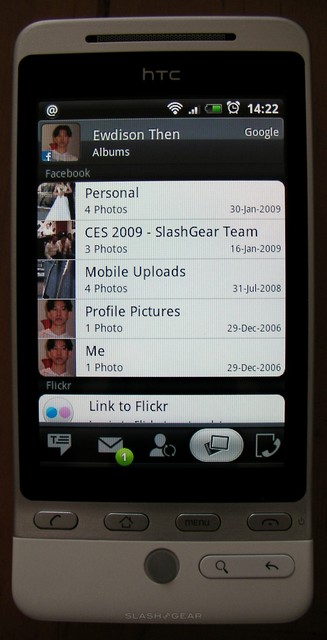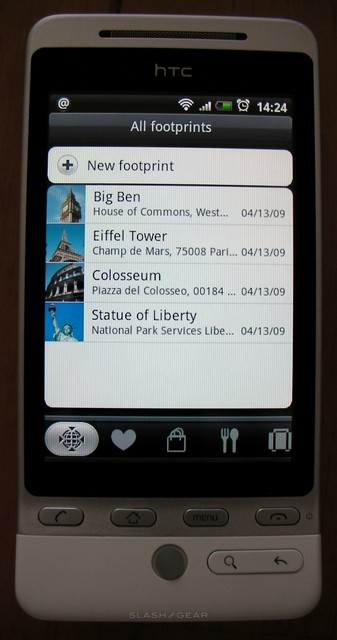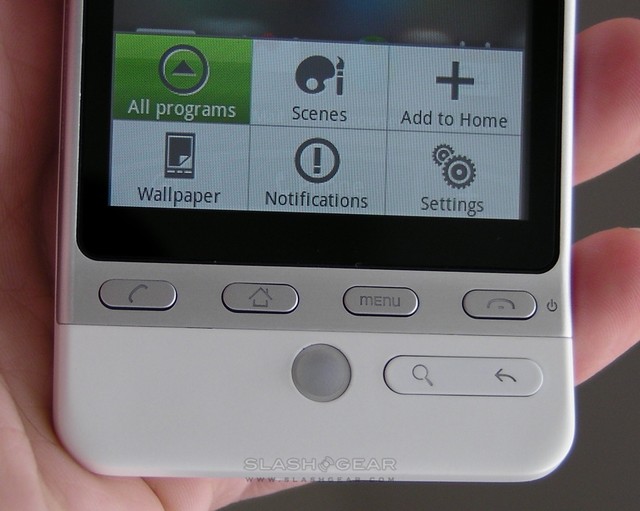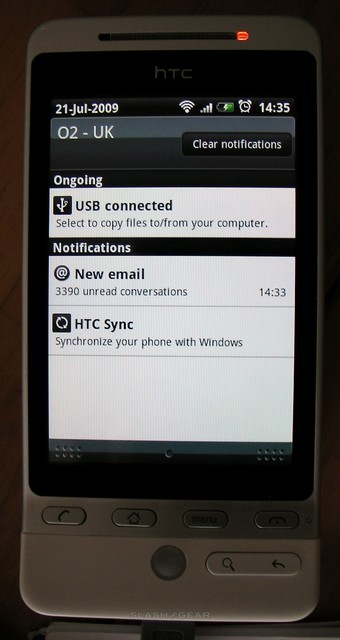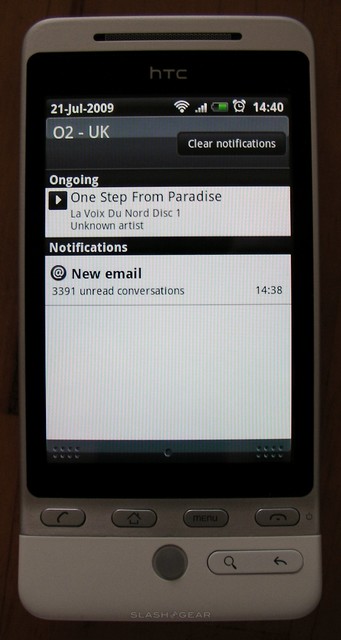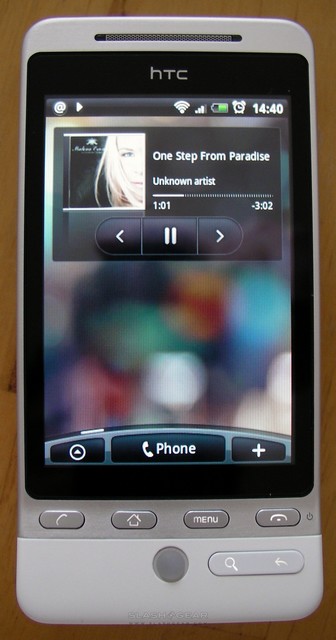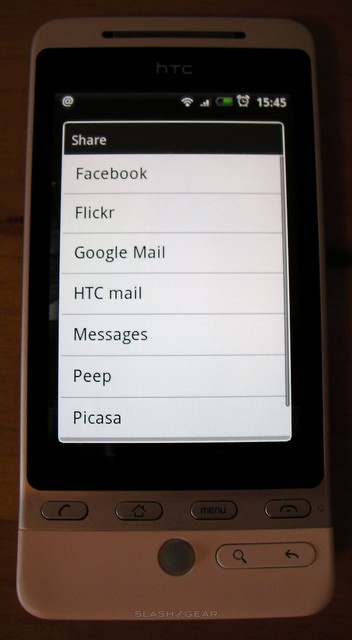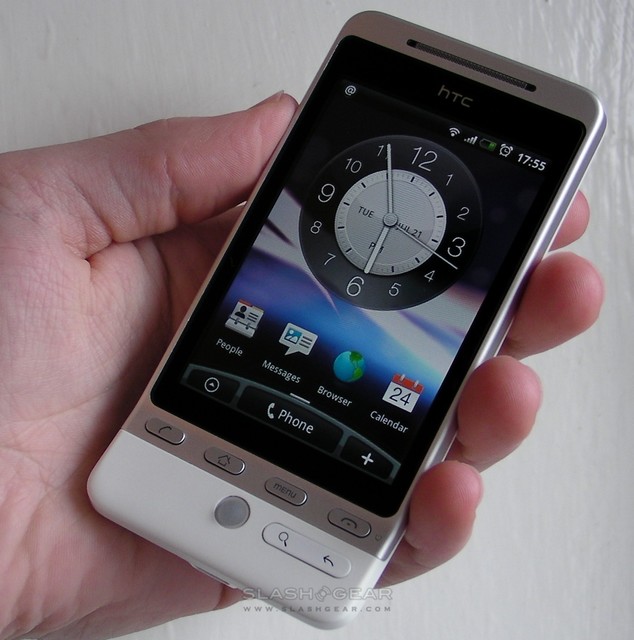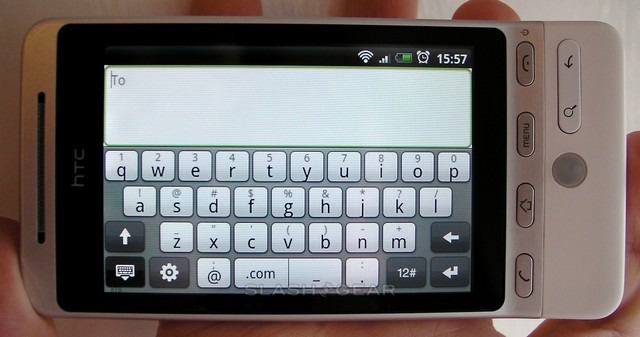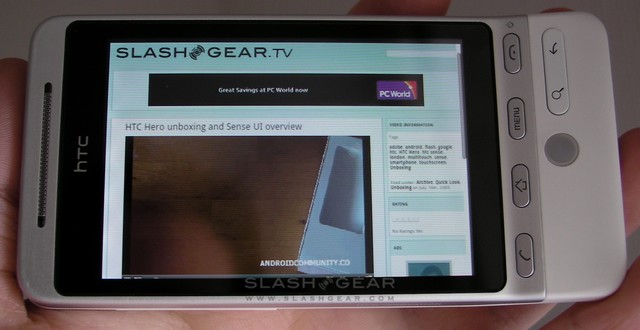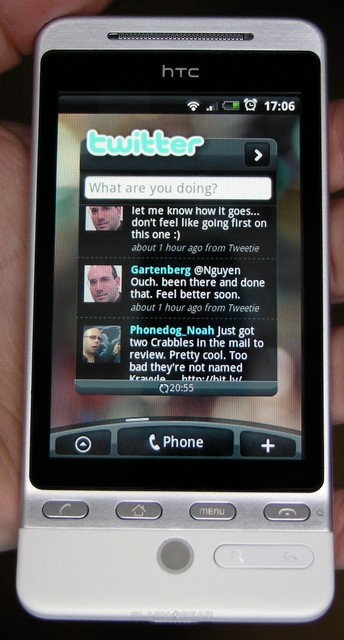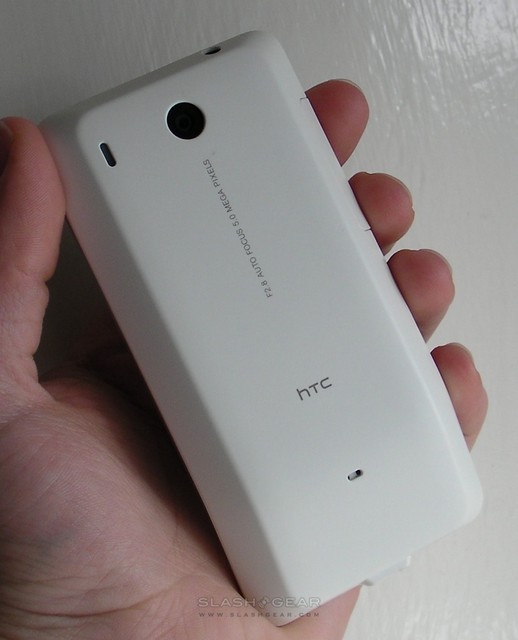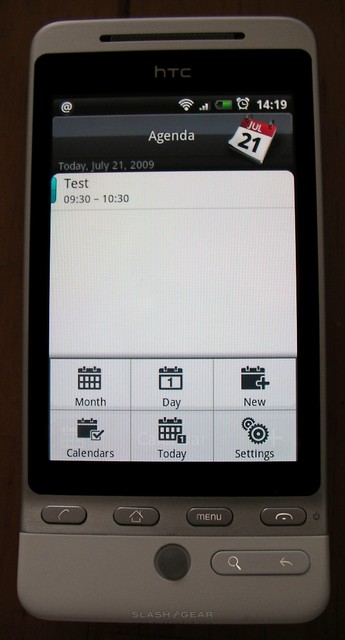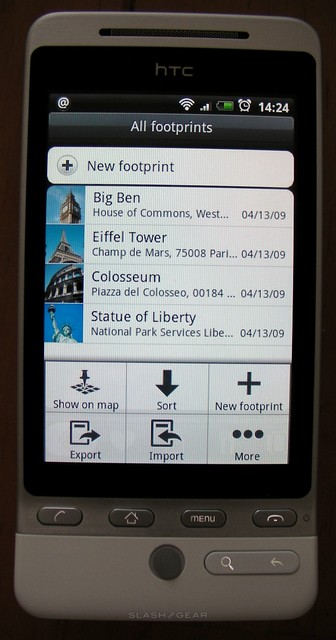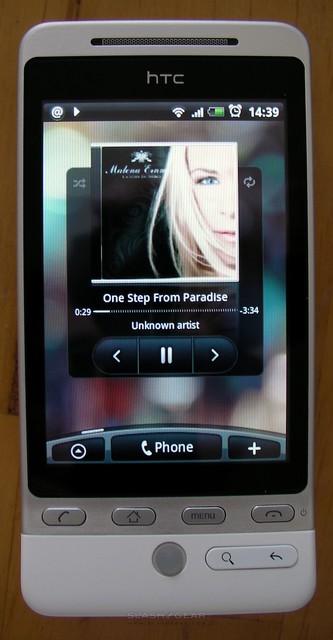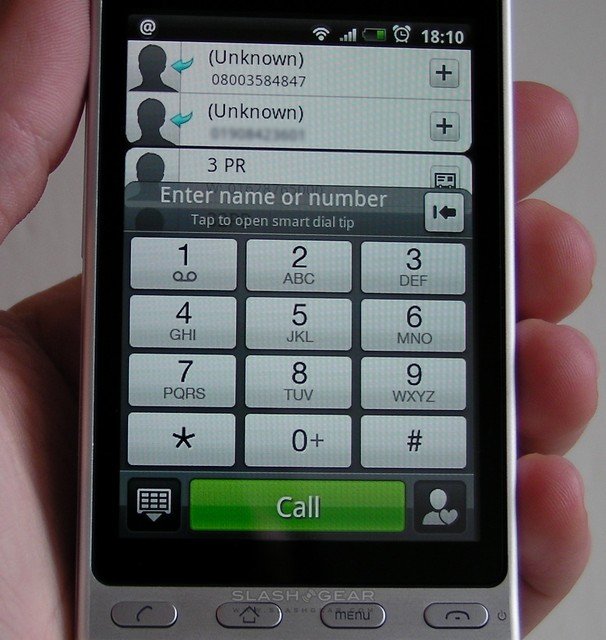HTC Hero Review
There's no underestimating the appeal of the HTC Hero; since we shot our unboxing video and preliminary hands-on at the end of last week it's been watched more than 300,000 times. The third Android device to reach the market, the Hero promises not only an updated camera and design, but HTC's latest work in user-interface, HTC Sense. Can the Hero live up to the hype? Check out our full review to find out.
From the outside, the Hero blends elements of both the device that have gone before it; the smartphone is size-wise more in line with the Magic, but with some of the angular style of the original HTC Dream (aka the T-Mobile G1). It's a thin handset, measuring 112 x 56.2 x 14.35 mm, and feels even thinner thanks to the sharp beveling of the edges. Our review unit is white, but depending on carrier there will be charcoal and black versions of the Hero, each with the subtle brushed-metal display surround. It's a distinctive design, but not unduly dramatic, and while we've heard complaint about HTC's persistence with the angled "chin" section this does make holding the phone and using the buttons and trackball more straightforward.
Up top there's a welcome addition to an HTC Android device, in the shape of a 3.5mm headphones socket, while on the base there's the company's own ExtUSB port (which is compatible with standard mini-USB). On the left-hand side there are surprisingly large volume controls, while on the back there's the 5-megapixel autofocus camera (which still lacks a flash of any sort). There's no dedicated camera button, either.
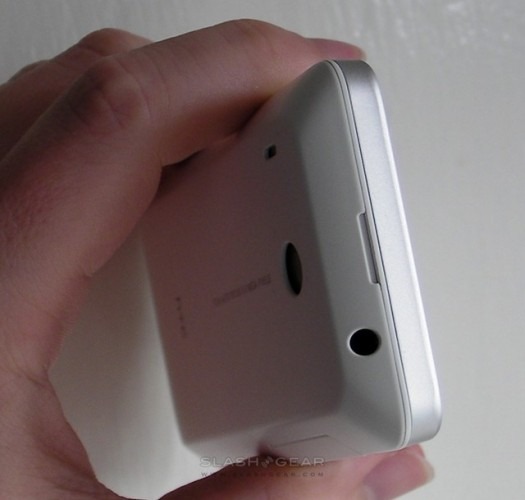
Up front, there's a 3.2-inch capacitive touchscreen running at 320 x 480 HVGA resolution, sitting above the usual six Android buttons: call, home, menu, call-end, search and back. The trackball from the Dream and Magic is also present, and it lights up when you receive an SMS or phone call. Above the display is the long, narrow speaker-grill, flanked on the left by an ambient light sensor and on the right by a two-color LED that flashes green to let you know a message has come in, and red when charging. The whole handset is covered in Teflon, which HTC say will better resist scratches, fading and staining; its matte finish is a tactile and aesthetically welcome departure from glossy devices.
Prise off the back cover – something which takes a little bravery to do, as it's a tight fit – and there's a microSD card slot that can be accessed without removing the battery, together with the SIM slot and 1,350mAh Li-Ion power pack. The whole thing weighs 135g.
On the inside, things are far more similar to HTC's existing Android range. The Hero has the same 528MHz Qualcomm processor, paired with 512MB ROM and 288MB RAM, as its siblings, together with 900/2100MHz HSPA/WCDMA supporting up to 7.2Mbps downlink and 2Mbps uplink speeds (network depending). There's also 850/900/1800/1900MHz GSM/GPRS/EDGE; we're yet to hear any announcement regarding a US-spec version of the Hero. Other connectivity includes WiFi b/g, Bluetooth 2.0+EDR with A2DP support, and of course USB 2.0, plus there's A-GPS, a digital compass and accelerometer.
Of course, what makes the Hero particularly special is the work HTC have done on its user-interface, under the auspices of their "HTC Sense" project. Sense is the culmination of three years of UI work, that has taken in multiple iterations of TouchFLO 3D on Windows Mobile across the years. Given that TouchFLO 3D could arguably be credited with keeping the aging Microsoft mobile platform as relevant as it has been for the past twelve months or so, that's no small lineage. Sense aims to take the basic Android OS and make it not only more visually appealing but functionally more immediate, bringing commonly-used services and features to the fore and, in no small way, making the fledgling Google platform more engaging "out of the box".
HTC's first, and perhaps most obvious way of doing that is through widgets. Previous Android devices have had a few widget options – search, picture frame, music, etc – and those are still present, but HTC introduce fourteen of their own, along with five "toggle" controls for connectivity options. These range from bookmarks and calendar, through a new mail app and messages app, to contact shortcuts, a Twitter app and a new weather app. As for the toggle switches, they cover airplane mode, Bluetooth, GPS, cellular connectivity and WiFi, and present an easy way to lock-down the Hero or simply shut off a potential battery glutton.
To accommodate all this flexibility, HTC have increased the number of homescreen panes from the usual three to seven; you can switch between them with a horizontal swipe across the touchscreen in either direction, or using the trackball. Your position in those panes is discretely shown by the arc at the base of the homescreen, which also has a direct shortcut to the phone keypad, main menu and widget control panel. Pressing the home hardware button also takes you directly back to the center pane, so it's always straightforward to navigate your way around. HTC's widgets share space with the usual shortcuts, which can be to apps, folders or bookmarks, and many of them have two different sizes to choose from. The music widget, for instance, has a small, basic option which will fit on a pane with other shortcuts, or a larger version which shows more track detail, album art, and takes up a pane to itself.
Seven panes, then, can be occupied relatively quickly, but to get around that HTC have added Scenes support to the Hero. Accessed by hitting the Menu button from the homescreen, Scenes basically allows for multiple layouts which the company expects will be used to differentiate between workday and social use. As standard the Hero comes preset with the standard HTC, Social, Work, Play, Travel and "Clean Slate" (blank) layouts, which you can leave as-is or modify and save with your own names. Each can have a different number of widgets, different wallpapers and other personalization. Or, of course, you can ignore them altogether and focus on just one standard Scene; as with the slide-to-unlock, which can be replaced by the standard Android pattern lock, Sense is about giving you more options not taking them away.
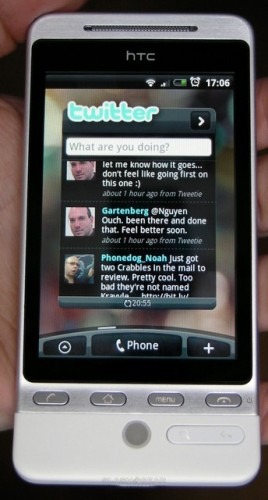
Each widget generally acts as a gateway to its own app, too, so while they're functional in their own right – you don't have to leave the homescreen to browse through your Twitter message stream, for instance – you're also one touch away from a more comprehensive experience. To stay with Twitter, the client – called Peep – shows the full message list and allows you to post a new tweet from the homescreen, but tapping into the app-proper brings up separate panes in which you can view your "@" replies, direct messages and favorites. It's also linked into your location, so you can send geographic updates letting people know whereabouts you are, and there are options for update frequency (number of tweets to download, up to 250; frequency of updates, from daily through every 5mins and manual) and even a choice of photo host, picture quality and URL-shortening service.
Peep works well, spawning a little bird icon into the notification bar when there are fresh messages, just as you would get with a new email. New messages have an easy photo upload button, which offers the choice of an existing picture from the gallery or to take a new shot with the camera then and there, and you can also tap the location button to tweet your geographical position as a link to a map, custom text or plain latitude/longitude. Our one gripe is the seeming absence of any way to quickly paste in Twitter contact names, beyond physically typing them out; an "insert follower username" option would make this much easier. Still, a long-hold on any tweet will bring up a menu for reply, send direct message, retweet, add to favorites or show profile.
A much-welcomed addition to an Android device is Microsoft Exchange support, and HTC have provided a new Mail app on the Hero to cater for it. As you might
expect, it uses ActiveSync to wirelessly synchronize, and offer push-email from hosted Exchange accounts. The Mail app also supports POP, APOP and IMAP, and can have multiple simultaneous accounts established; download frequency can be set from 5 minutes through to daily, plus manual, and you can choose how many days of messages you want on your Hero and the maximum size of each message (there's an option to download the rest in each curtailed email). Once set up, different accounts can be switched between via a drop-down menu at the top, while a sliding selection marker at the bottom of the screen takes you between three main views. The first lists all emails by date and individually; the second threads together email conversations; the third lists only emails with attachments.
The most obvious comparison to be made is with Android's native GMail app, also present on the Hero. While the screen size devoted to messages in each app is different, both show at most seven email headers at any one time; GMail obviously conversation-threads as standard, and tags one message after another, while HTC Mail shows one email at a time with up/down buttons to flip between messages in a thread. It's arguable as to which system works better; those comfortable skipping down long conversations via touchscreen swipes will most likely prefer the GMail app, while the HTC offering does make it easier to get to the start of the next message. Happily, since GMail offers IMAP support for their accounts, you can pick between the two clients depending on your UI preference; remember, though, that Mail won't let you search the GMail server like the native app will.
Of course, the major difference is that Android's GMail app has no homescreen widget, only a shortcut, whereas HTC Mail does. You can choose to devote a whole homescreen pane (there's no cut-down mini-widget, though there is a simple shortcut button) to Mail, and from there flip through the stack of emails, bin them, write a new message or go directly to the inbox. There's no HTML support in the widget, only plain text, but it's certainly enough to see multiple lines of an email and choose whether it's worth heading into the app proper to do anything about it.
The new SMS app works in a similar fashion, grouping messages by sender and presenting them in a conversation with icons – if present – from the contacts app. HTC provide a number of quick-text inserts (such as "Where are you?" and "I'm running late") together with the ability to easily attach pictures, video, audio, location data, a vCard contact file, vCalendar appointment, or to create a new attachment. This latter option takes you to the camera, camcorder, audio-recorder or slideshow apps, allowing you to film a clip, etc, then attach it straight to an MMS. As for the accompanying widget, this uses a Rolodex-style presentation to flip through the most recent messages from a contact on the homescreen, together with a shortcut to write a new message.
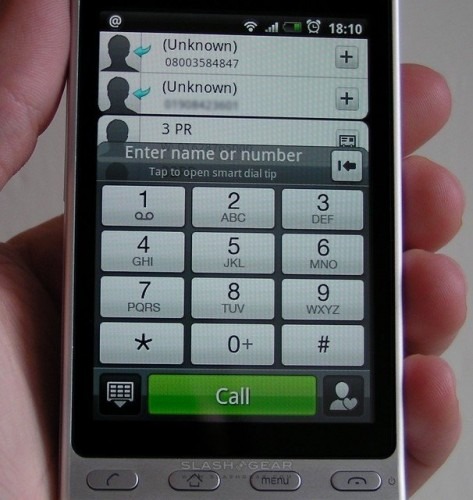
Moving to the Phone app, this can be accessed via the listing in the main programs menu or by pressing the shortcut button at the base of the homescreen. It opens by default with your recent calls list overlaid with a number pad; tapping the buttons either enters the number or uses T9 to search through your contacts for a matching name. Alternatively, minimizing the number pad shows the contacts list itself; the Menu button gives shortcuts to the contacts app proper, your full call history, favorites and speed-dials, as well as settings. Call quality is fair, with the Hero relatively tenacious with a signal and no problems for either party with volume or noise. The side volume keys adjust earpiece volume when in a call or ringer volume (down to vibrate and silent) otherwise; during calls the number pad is a button-press away, while the Menu button brings up options for speakerphone, putting the caller on hold, adding another party, launching the contacts app and muting the microphone.
HTC are proud of the work they've done with Sense when it comes to contacts, on the Hero called People, and they've good cause to be. As with other apps, People is navigated primarily by a sliding bar at the base of the screen, which takes you from the full contacts list, to favorites (with the option to add a new favorite), to groups, to Updates and Events (more on this in a moment) and to call history. The Menu button brings up options to add or delete a contact, view an entry, search through People, import from SIM and synchronize Exchange contacts
What elevates People above and beyond the standard Android address book is its integration with Facebook and Flickr. By entering your login details for one or both, People automatically tries to match up contacts you have on those networks with entries in your address book. Doing so pulls in their latest Facebook status update, photo galleries from both sites, their birthday and email address, and their avatar photo which is used as a contact photo. If People can't match them up correctly – we had a few different names in our lists, which confused it – then you can manually link profiles. The "Updates and Events" tab shows any new changes from the two sites, such as upcoming birthdays and new galleries; tapping into an individual contact shows the same for just that individual, together with panes for any messages, emails and calls between you and them.
It all works surprisingly well, and is certainly a straightforward way to fill in contact photos and missing birthdays across your address book. There's little lag in updating, and by tapping your own entry at the top of the contacts list you can see your own Facebook and Flickr notifications, handling any unread messages, event invitations, friend requests and other alerts. We wish – given the work HTC have obviously done on Peep – there was a way to link in Twitter accounts in a similar fashion to Facebook, but currently there is not.
Plugging the Hero into a PC brings up the options to either treat it as a mass storage device or to launch HTC Sync. This latter app, available as a free download though only for Windows PCs, allows you to synchronize your Outlook or Windows Address Book (i.e. Outlook Express contacts) with the Hero, rather than using a wired ActiveSync connection.
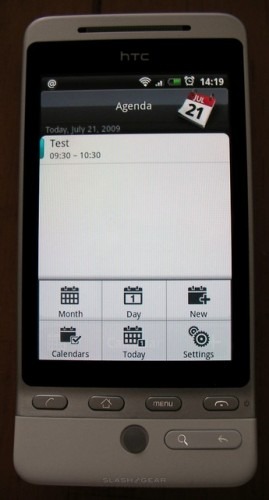
Unfortunately HTC Sync doesn't seemingly manage your calendar entries in the same way, which is a shame because the new Calendar app on the Hero is a generally pleasant way to get organized. It defaults to a month view (as does the large homescreen widget; the small version has a single line of the next upcoming appointment) but offers day and event-list views via the Menu button. There's also a Calendars button, which allows you to switch between various different agenda sources: Outlook (wirelessly via ActiveSync) and any Google Calendars you might have. These can be set to all simultaneously display (with different color coding) or toggled off to only show particular agendas.
If the Calendar is intended to organize your life moving forward, then HTC Footprints is more about looking back. A feature of certain GPS-enabled Windows Mobile devices from HTC's stable, Footprints basically allows you to snap a photo with the Hero's camera, geotag it, and then add various details including phone number, website, a voice memo, star rating and notes. Finally you can categorize it – shopping, dining, etc – and share them via SD card. It's a straightforward system, and if you regularly travel then it's handy to make a note of favorite restaurants and the like, but we wish there was a simple way to share Footprint entries online with others.
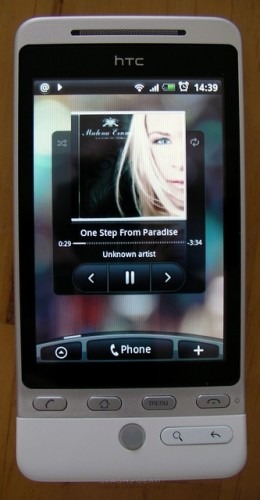
Loading up content for the Hero's media app is easiest done via a USB connection, and HTC supply a suitable cable in the box. The smartphone mounts the microSD card as a removable drive, and you can drag and drop audio and video files straight across. Files on the microSD card are automatically registered into the app, which is a basic though functional PMP. There's the usual shuffle, repeat and playlist functionality, together with sorting tracks by artist, album and other ID3 data, and you can also set files as the active ringtone directly from the mediaplayer app. Audio quality from the built-in speaker is loud if not especially refined, but thankfully we've no complaints with quality via the 3.5mm headphones jack, particularly if you do the sensible thing and plug in your own headphones rather than those HTC supply. During playback the volume keys control the music, rather than ringtone volume.
As for the impact of music playing in background on other apps, we noticed a very small amount of lag introduced, particularly when loading a data-heavy application such as a full inbox or lengthy contacts list. Happily there was little impact on web browsing speed, with page panning and zooming as smooth as usual. In fact, our general impression of the Hero's performance has been very good, with the Sense modifications doing little to slow the smartphone down.
Turning to the browser, the biggest news here is the addition of multitouch support for pinch-zooming together with Flash playback. The app is generally the same as on previous Android devices, only instead of zoom in/out buttons you can close and spread your fingers to manipulate the page. It's a far more natural way of browsing, and allows for much finer control, and frankly it's about time an Android smartphone supported it (officially). Double-tapping to reformat text works well, and the trackball steps neatly between links for when navigating more crowded pages. Multiple browser windows can be opened, though we did experience a couple of odd moments where background pages were closed without warning.
As for Flash support, this instantly kicks the HTC Hero a step ahead of many other smartphones on the market. Although there's HTC's usual excellent YouTube viewer preloaded on the phone, you can now stop by the full YouTube site and watch in-page streaming video too. To be honest, the layout of the standalone app actually makes it more usable than YouTube's site, but the Flash support comes into its own when you encounter in-page videos on news and review sites. In our tests, only Vimeo videos failed to load, though connection speed also has a significant affect on overall browser performance when buffering footage.
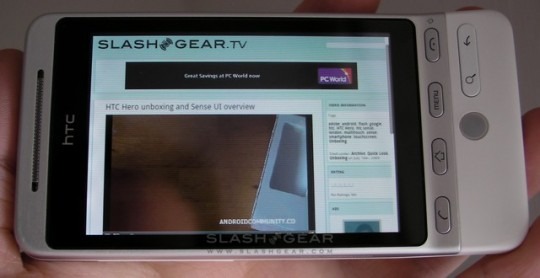
Flash is more than just video, though, and so we stopped by some graphics and animation-intensive MySpace pages to see if we could overload the Hero's browser. Unfortunately not every element loaded; the music player many users have underneath their profile information was the most obvious error, telling us we needed an upgraded version of Flash. Stepping over to a Flash game site proved disappointing too, with games taking very long periods to load and then usually proving uncontrollable in the absence of a keyboard or mouse. It's certainly possible that some titles will be better suited to the Hero than others, mind.
With pinch-zoom supported in the Android browser, it was a surprise to find that the same functionality didn't work in Google Maps on the Hero. Instead, you're left with the same zoom in/out buttons as usual. The Hero has the same Street View support as earlier Android phones, accessed by tapping and holding a point on the display and selecting it from the pop-up menu. There are directions for driving and walking, but no voice-prompts so in-car use isn't advised.
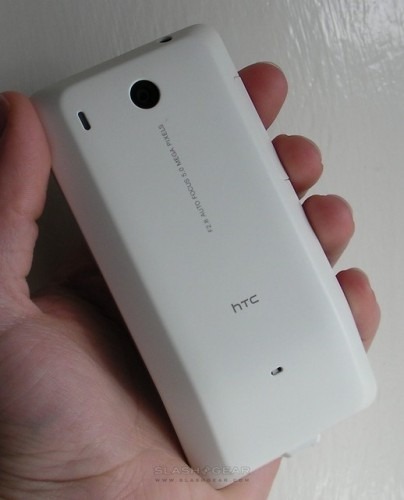
The Hero's camera is a step up, offering 5-megapixels with autofocus though no flash. It records both stills and video, toggled between with a simple on-screen button, and has basic white balance, brightness and flicker adjustment. There's also a self-timer and optional geotagging. Photos are captured as JPEGs while video can be H.263 or MPEG4; once taken, they can be uploaded to Facebook, Flickr, Picasa or YouTube, or sent via GMail, HTC Mail, MMS or Peep (Twitter). Quality, meanwhile, is reasonable though not likely to displace dedicated point-and-shoot digicams or some of the high-end imaging featurephones we've seen in recent months. Still, it's a welcome step up from the Dream and Magic.
One of HTC Sense's more impressive introductions is the new on-screen keyboard, and this is a real step up from what arrived on the HTC Magic with the Android OS 1.5 Cupcake release. Obviously both portrait and landscape orientations are catered for, each with well-spaced QWERTY layouts and secondary pages of numbers and symbols, while those secondary characters can also be accessed by pressing and holding the relevant letter key. As you do so, a preview of the character pops up above your fingertip, handy for ensuring you're tapping the key you intended to. There's also auto-complete and auto-correct, with a list of words showing up above the keyboard as you type; you can either tap them or press space to select the current highlighted word. Adding new words to the dictionary is also well handled; if you type a word the Hero doesn't recognize, you can tap space to insert it or tap the word itself on-screen to not only insert but to add it to the dictionary for later use. In all, the keyboard is a real pleasure to use and we had no problems building up a decent typing speed in either orientation, especially when holding the Hero in landscape and thumb-tapping with both hands.
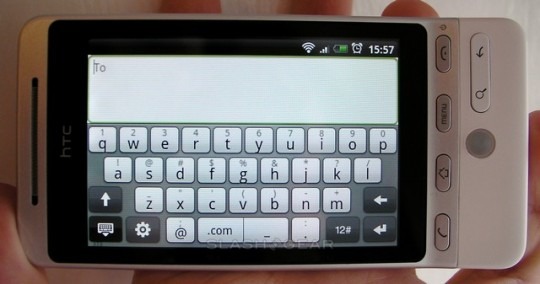
Elsewhere, there's the usual array of Android apps and options, including the Android Market for software downloads. The BBC iPlayer app works well on the Hero, and of course you can add shortcuts to newly downloaded software onto the various homescreen panes. We're hoping HTC – or third-parties – release some more homescreen widgets, as we really like the instant ease-of-use they bring to the platform.
HTC supply a 1,350mAh battery with the Hero, 10mAh more than the Magic, but quote up to 420 minutes of WCDMA talktime or 470 minutes of GSM talktime (20 minutes more than its predecessor). They also suggest up to 660 hours of WCDMA standby or up to 420 hours of GSM standby. We didn't have enough time to put the Hero through the sort of charge/discharge and use cycles we would have liked to; however, with regular use of messaging and browser, plus several calls and email regularly checking over a mixture of WiFi and 3G, we found the phone would last morning to night before needing a recharge. This is certainly a handset you'll be charging every night, but from our experience over the past few days it shouldn't require the mid-day top-up many iPhone 3G users, say, report.
Back in our initial unboxing and overview of the HTC Hero, we tongue-in-cheek suggested that it could be the best Android smartphone to date. Having spent more time with it, that cavalier prediction is looking highly accurate. Android's flexibility is, arguably, one of its biggest stumbling blocks; out of the box there's little to guide a new owner through the platform's capabilities. By introducing Sense, however, HTC have made the Hero instantly usable, and they've done so not with the bare minimum of app investment but with a range of programs that offer up-to-date functionality like social network integration.
Best of all, HTC's dedication to developing Sense and treating UI as a long-haul process rather than a short-term prettification exercise gives us hope that the few shortfalls and omissions we're currently seeing in version one of the Hero will be addressed over time. It's reassuring to know that not only is the Hero a great smartphone but that it's only likely to get better as HTC continue their tweaks. It's safe to say that, in the HTC Hero, Android has come of age.
The HTC Hero is available unlocked and SIM-free from Clove.co.uk, priced at £335 pre-VAT. They offer international shipping.HTC Hero unboxing and Sense UI overview:
[vms 9af4dd08de5d1de54f68]
HTC Hero media widget and Flash-capable browser:
[vms 46a9d49d3d3af4f57443]

